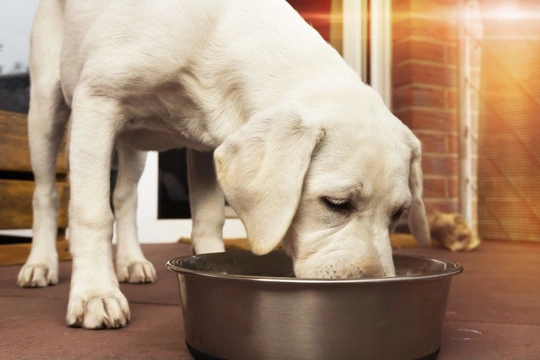
Does a high protein dog food mean that the food is good quality?
All dog owners want to do the best by their dogs, and a large part of this means choosing and feeding a good quality diet that is a good fit for the dog’s requirements, including their activity levels and life stage. However, because the average dog owner isn’t also an expert on canine nutrition, it can be hard to know how to do this, when most of the guidance and direction we as dog owners receive comes from pet food packaging and advertisements!
Protein is of course one of the most important ingredients in dog food – and when it comes to dog food, protein usually comes from meat. You would naturally expect that a good quality dog food wouldn’t scrimp on the meat content – but if a food is high protein, does this necessarily mean that by default that it is also good quality?
Is feeding a high protein food a good way to provide an excellent diet for your dog?
In this article, we will answer these questions and look at whether or not a high protein dog food necessarily means that it is a premium or high-quality food.
The role of protein in the canine diet
Many dog owners automatically correlate protein as meaning meat, but this isn’t always the case. Whilst most of the protein in dog food is meat-derived, protein can also be found in other products too, including dairy products, eggs, pulses, and even vegetables.
Your dog’s body needs protein to provide energy, to create and repair tissue, and to produce all of the enzymes, hormones and chemicals that the body needs. Without enough protein in their diets, your dog won’t have much energy and won’t thrive – so how much protein do dogs actually need?
How much protein is normal for dog food?
When you look at the ingredients listing of your dog food, you will see a breakdown of the analytical constituents as well as the ingredients itself. For an average healthy adult dog, you will tend to find that a middle of the road good quality food will contain anywhere between 18% and 30% total protein, which may be drawn from a variety of sources and not just meat.
Lower than 20% is generally considered to be too low, other than for dogs that are deliberately being fed a low protein diet due to a health issue or for another good reason. However, few regular foods will contain more than 30% protein, which is a surprise to many dog owners, who tend to imagine that dogs eat more meat than anything else.
This is not the case – dogs are omnivores, and need more than just meat in their diets. They also need fibre and roughage in the form of plant matter – fruit and veg – and can also eat things like fish, eggs, dairy products, and even grains. Grains, however, have little to no nutritional value for dogs, and are generally used as a bulking agent in foods.
Is high protein better?
When you take into account the fact that 18-30% protein is around the norm for the average healthy adult dog’s diet, does it give your dog an advantage if you feed a diet with a higher level of protein in it?
Well, other than in a certain narrow range of situations, the answer is probably no. Protein might be what we think of as being the premium or main ingredient of dog food, but this doesn’t mean that it is the only thing that they need – or that too much won’t be bad for them.
It is entirely possible to give your dog an unbalanced diet if their food is too rich in protein, and feeding too much protein can cause problems such as excess weight gain, an increased risk of problems such as kidney disorders in later life, and malnutrition.
There is no good reason to seek out a high protein diet for your dog just for the sake of it, and as mentioned, this may even cause problems.
However, some dogs do need more protein than others, at certain stages of their lives – for example, growing puppies, nursing dams, and dogs that are highly active (such as those in high-level working roles of canine sport) all need more protein than the average active pet dog.
On the other hand, some dogs may need less protein than the norm, particularly dogs that are elderly, less active than normal, or that have an underlying health condition that can be affected by protein.
Ultimately, a better approach to choosing a good pet food for your dog would be looking at the source of protein, and the quality of it, rather than seeking a food with a higher amount of protein.
Look for a food that contains single-source whole cuts of meat rather than meat meal or by-products, and that cuts down on bulking agents like grain.



